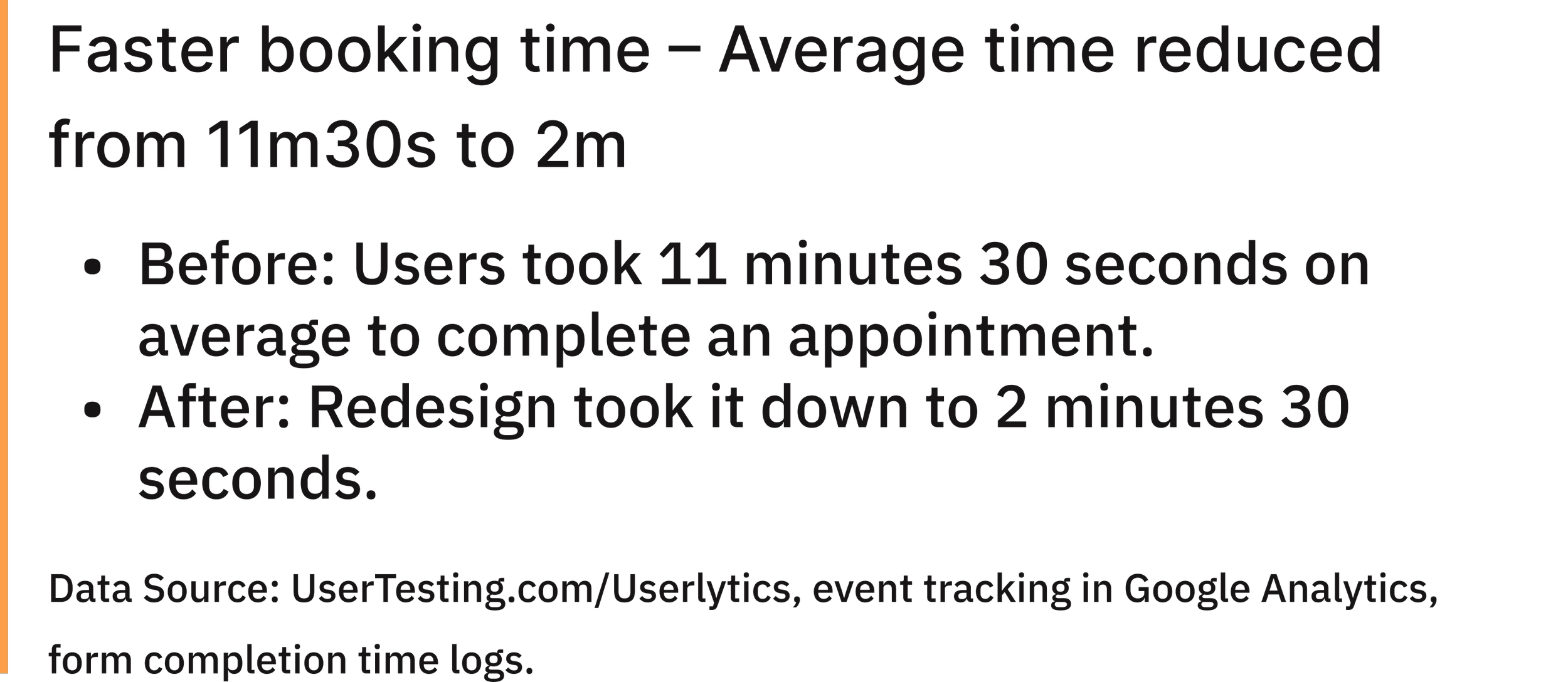
Introduction
WellNow Urgent Care is a leading provider of walk-in and virtual healthcare services, operating across 200+ locations. Focused on fast, convenient, and patient-centered care, WellNow offers seamless online scheduling, urgent care visits, and telehealth options.
As the Lead Product Designer, my role was to enhance the digital appointment booking experience by reducing friction, improving accessibility, enhancing the mobile experience, and addressing usability bottlenecks.
Through quantitative and qualitative research, I identified key pain points and developed solutions that aligned with both user needs and business goals.
This case study explores how a research-driven solution and high-fidelity prototype helped optimize the scheduling process, website, and mobile-first experience, improving usability and increasing patient engagement.
How might we improve the user experience of online appointment scheduling?
Is WellNow’s online experience a problem, and why?
WellNow Urgent Care provides online appointment scheduling, but user feedback and analytics revealed major friction points in the experience.
1. High drop-off rates (50%) during the scheduling process (Google Analytics)
2. Mobile usability issues: Heatmaps showed low engagement and frustration signals on small tap targets and form fields.
3. CTA confusion: Button copy inconsistencies led to lower conversion rates (~3.5% improvement in clicks after A/B testing).
4. Lack of rescheduling options: Patients couldn’t easily modify or cancel appointments, increasing no-shows.
5. Disconnect with content/marketing team: UI and brand consistency resulted in loss of trustworthiness.
The task at hand (my role as the Lead UX Designer)
Identify usability bottlenecks through quantitative and qualitative research.
Redesign the scheduling experience to improve usability and conversion rates.
Ensure the platform was mobile-friendly and accessible.
Align UX solutions with business goals, increasing patient retention while maintaining operational efficiency.

Let’s define the main problems we want to solve (Action items)
Conduct User Research & Data Analysis + Competitive Analysis
Analyze analytics, session recordings, & user surveys to pinpoint pain/drop-off points.
Focus on Accessibility & Brand Cohesion
Ensure text contrast, alt text, and keyboard navigation met WCAG standards.
Work with the content team to improve consistency across the website and scheduling platform.
Simplify the Scheduling Flow
Reduce the form steps and eliminate redundant fields.
Design a mobile-first experience (90% of users are mobile, coming from Google search)
Progress indicators to guide users through the scheduling journey
Improve Call-to-action (CTA) Messaging & Navigation
A/B test CTA copy (e.g., “Schedule Visit” vs. “Schedule In-Person Visit”)
Enhance button contrast, size, and placement to improve visibility.
Address Appointment Availability & Rescheduling Issues
Enable real-time slot updates to prevent scheduling conflicts.
Advocate for a more flexible rescheduling process, balancing business concerns and patient needs.
Bugs, UI issues, usability functionality, and accessibility issues
Mobile optimization, UI errors, long scheduling flow and
Improve CTA messaging for more clarity
Outdated navigation that caused users to endlessly search for the right information
Don’t Make Me Think! (My goal for users)
USER RESEARCH: TEXT EARLY, TEST OFTEN!
Entire site audit– Dove deep into existing domain knowledge, and uncovered customer insights through extensive field research and competitive analysis (both digitally, and in-vehicle)
Conducted user tests with users and existing patients to verify and discover pain points
Identified that appointment scheduling had a high abandonment rate (partially) due to confusing copy
Competitive analysis (Carbon Health, CVS Minute-Clinic)
Microsoft's brand attribute test (to gauge trustworthiness)
Fast, light, frequent testing (3-5 users for task-related tests)
Think-aloud protocols (verbalize their thoughts as they navigated the website)
First-click testing for scheduling copy
New navigation to follow the rest of the Aspen brands to include hover-over drop downs, chevrons, and opening pages in new tabs when applicable.
UXR Tree Test Results:
95% accuracy on find-ability with the new navigation.
Tested twice with 50 users total until I got at least 90%.
User Research Results
Version 1 CTA Buttons
7/10 took over 1 minute to schedule a virtual visit and 3/10
took over 5 minutes!
“A lot of questions are asked prior, I hope this means I spend less time at the Dr.’s office”
“I’m confused with the cost, because it says online costs $75, but video costs $75 too..so is that 150?”
“What the hell do I click on if I want to schedule a virtual visit, and not start one?”
Version 1
Version 2 CTA Buttons
28.45% increase in virtual visit CTA clicks after A/B testing clearer button labels.
9/10 took less than 45 seconds and 1 took under 75 seconds
Stronger Impact on Virtual Visit Clicks
Limited Impact on Actual Appointment Completion
Clearer CTA Copy Improves Click Engagement
Clicks on left CTA: +3.5% @ 87% statistical significance
Clicks on right CTA: +11% @ 92% statistical significance
Appts Completed: +3% @ 55% statistical significance
Version 2
#OutWithTheOld
4 steps to book a visit! Holy Moly!
Corner cases + cancel/reschedule appointment(s)
Results Summarized

TAG Office view
























